THEBEN. Epaminondas. Stater (12.05g). ca. 395 - 338 v. Chr. Vs.: Böotischer Schild. Rs.: ΕΠ-ΠΑ, Volutenkrater, die Schulter mit Blattzungenstab verziert. BCD Boeotia 540; Hepworth 34; Head, Boeotia S. 64. Zarte Tönung, ss; GRIECHEN; BÖOTIEN; THEBEN Epameinondas, der das Amt des Boiotarchen mehrfach inne hatte, wurde vor allem durch die Erfindung der Schiefen Schlachtordnung berühmt. Durch diese Taktik konnte er das mannschaftsmäßig überlegene Heer der Spartaner in der Schlacht von Leuktra in die Knie zwingen. Dieser Sieg beendete die spartanische Hegemonie über die Peloponnes und begründete das thebanische Intermezzo. In der Schlacht von Mantineia 362 v. Chr. fiel er im Kampf. Sein Tod läutete gleichzeitig das Ende der thebanischen Vorherrschaft ein. Nachdem sich die griechischen Poleis über Jahrhunderte gegenseitig bekämpft hatten, wurde in der Folge das historische Geschehen von den makedonischen Königen bestimmt. The question whether the statesman and general Epaminondas was responsible for this issue is still a subject of discussion, but it has always been regarded as most likely ( cf. C.M. Kraay, Greek Coins and History, London 1969, S. 3, Taf. 1,1). Epaminondas was a political and tactical genius credited with several military innovations that deepened and strengthened the traditional Greek phalanx. At the battle of Leuktra in 371 BC., Epaminondas successfully led the Boeotians against the invading Spartan army and ended nearly 300 years of Spartan military supremacy. He came close to achieving total hegemony over mainland Greece, but was killed in battle against the Spartans in 362 BC, leaving the playing field open for Macedonia (cf. R. Hepworth, Epaminondas Coinage, in: Proceedings of the 10th International Congress of Numismatics, pp. 35-40) .
Erhaltung: Zarte Tönung, ss
THEBEN. Epaminondas. Stater (12.05g). ca. 395 - 338 v. Chr. Vs.: Böotischer Schild. Rs.: ΕΠ-ΠΑ, Volutenkrater, die Schulter mit Blattzungenstab verziert. BCD Boeotia 540; Hepworth 34; Head, Boeotia S. 64. Zarte Tönung, ss; GRIECHEN; BÖOTIEN; THEBEN Epameinondas, der das Amt des Boiotarchen mehrfach inne hatte, wurde vor allem durch die Erfindung der Schiefen Schlachtordnung berühmt. Durch diese Taktik konnte er das mannschaftsmäßig überlegene Heer der Spartaner in der Schlacht von Leuktra in die Knie zwingen. Dieser Sieg beendete die spartanische Hegemonie über die Peloponnes und begründete das thebanische Intermezzo. In der Schlacht von Mantineia 362 v. Chr. fiel er im Kampf. Sein Tod läutete gleichzeitig das Ende der thebanischen Vorherrschaft ein. Nachdem sich die griechischen Poleis über Jahrhunderte gegenseitig bekämpft hatten, wurde in der Folge das historische Geschehen von den makedonischen Königen bestimmt. The question whether the statesman and general Epaminondas was responsible for this issue is still a subject of discussion, but it has always been regarded as most likely ( cf. C.M. Kraay, Greek Coins and History, London 1969, S. 3, Taf. 1,1). Epaminondas was a political and tactical genius credited with several military innovations that deepened and strengthened the traditional Greek phalanx. At the battle of Leuktra in 371 BC., Epaminondas successfully led the Boeotians against the invading Spartan army and ended nearly 300 years of Spartan military supremacy. He came close to achieving total hegemony over mainland Greece, but was killed in battle against the Spartans in 362 BC, leaving the playing field open for Macedonia (cf. R. Hepworth, Epaminondas Coinage, in: Proceedings of the 10th International Congress of Numismatics, pp. 35-40) .
Erhaltung: Zarte Tönung, ss


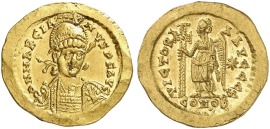
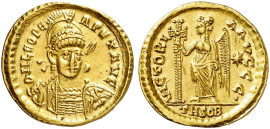



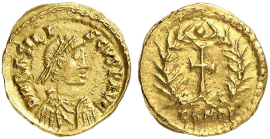
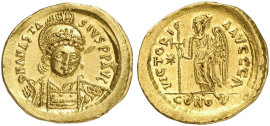
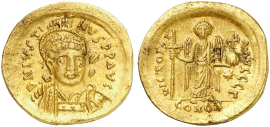

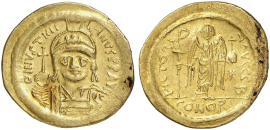
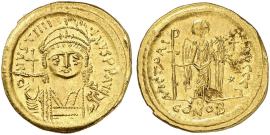
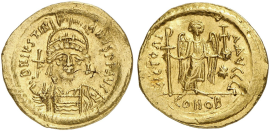

Try LotSearch and its premium features for 7 days - without any costs!
Be notified automatically about new items in upcoming auctions.
Create an alert